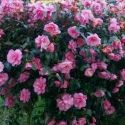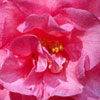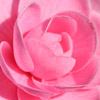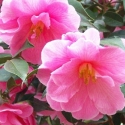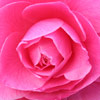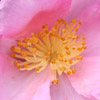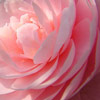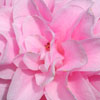Camellias for Sale in New Zealand NZ
Camellias are the probably one of the most versatile garden shrubs and are deservedly popular with New Zealand gardeners. Here at Wairere Nursery we specialize in Camellias and pride ourselves in our great range with something to please everyone. Remarkably tolerant and adaptable Camellias can be used for hedging, container planting, espalier or stunning one off specimens. With careful selection Camellias will provide beautiful flowers from March through to November. The flower colour ranges from the crisp white of Camellia Setsugekka, the brightest pink of Camellia Paradise Hilda or the deep sensuous red of Camellia Night Rider and everything in-between. Flower size can be large or small – whatever takes your fancy. Our top quality plants reflect the many years of experience the Wairere team have at selecting the best. Purchase online from our secure web-site and have them carefully packed and freighted to your door or visit us at our Hamilton Nursery, 826 Gordonton Road, R D 1, Hamilton.
Espalier (Es-pah-lee-yay) is a horticultural term derived from the French word for trellis, and is used to describe a plant that has been trained to grow flat against a trellis or wall. This is particularly desirable when space is limited, because, as we know, Camellias can be ‘space gluttons’, and in smaller gardens the solution for lovers of Camellias is to grow them using this technique.
When selecting a plant for use as an espalier, look for one with open, sprawling growth and several leading branches. Plant the camellia against the wall or trellis, then tie the branches back in the desired position using soft plastic ties or twine – don’t use wire as it can cut into the branches. Prune off any unnecessary growth, training the leaders to grow horizontally or at an upward angle, with the best displays generally being symmetrical. Try to keep any major pruning until after flowering and your espalier will reward you year after year with a display of flowers that will always be in clear view.
Most sasanqua varieties are suitable, although any camellia can be trained as an espalier.
The word espalier initially referred to the actual trellis on which the plant was trained to grow, but over time has come to be used to describe the technique. An espalier collects almost as much sunlight as a regular tree, yet has far less mass. This makes them ideal not only for decorative purposes, but also for gardens in which space is limited. They may also be planted next to a wall, which can reflect more sunlight and retain heat overnight, or be planted so that they are facing north and absorb maximum sunlight. These two factors allow an espalier to succeed in cooler climates, where a non-espaliered tree of the same variety would fail.
Varieties that can be successfully espaliered:
Rosaflora Cascade
Wirlinga Bride
Early Pearly
Mine No Yuki
Many new releases in the Camellia world are hybrids, some of which have been bred right here in New Zealand. We currently have 50 Camellia hybrids to choose from. They range from "Quintessence" which has a low, spreading habit, making it ideal for pots and baskets to the showy upright "Dreamboat" that has large, gay, frilly double blooms of brightest pink and just about every variance in-between.
The flower type is wide and varied andmost varieties do in fact originate from Japan, Japonicas can also be found in Korea and China. In Asia, Japonicas have been cultivated for their ornamental value for over 300 years. The Western world embraced and continued this cultivation from the 19th century onwards starting with chosen seedlings. Their popularity is such that there are now literally thousands to choose from.
you will often see them described as Single, Semi-double, Formal, Peony, Anemone and Rose form. Try not to get confused by all of that and simply make your choices from what apeals when you see the plants are in flower at the nursery or by browsing our website. As beauty really is in the eye of the beholder it is simply a matter of personal taste.
The flower size can be as small as 5cm across or as large as 20cm. Flowering time varies too; however with careful selection you can have japonicas in bloom from autumn through to spring. The colour range is white, cream, pink, (in all its variances) right through to red. There are even striped and two-tone blooms for a more eccentric look. The foliage is strong, glossy and dark green.
In summary, Camellia japonicas are top performing, undemanding, value-for-money garden plants that will reward you year after year for very little effort. What more could you ask for?
Reticulatas generally commence blooming around about May. They have quite an upright growth habit and an open framework of branches and foliage. The leaves are very large, glossy and leathery. Find a place in the garden where you want to make a strong statement and your chosen Camellia reticulata won't hesitate to make it for you, even on the gloomiest winter day.
This variety of Camellia is so fantastic and versatile you're definitely going to want some for your garden. So let's start with how to pronounce the name - "Sa - sang - kwa". Now you can be sure you'll be shown the right plant when you head into the nursery - and the boys will be impressed!
Originating in Japan these Camellias are known as the "Autumn Camellia" as they start flowering from as early as March. The flowers are usually quite small, often single and produced in such profusion it is sometimes difficult to see the foliage. Many have a soft delicate fragrance. The leaves are small, dainty and quite pointed. When the new foliage emerges towards spring it is quite soft and sensual with warm bronzy tones, which eventually mature to the more familiar glossy dark green. Despite the beauty of the flowers it is the foliage which provides the versatility so loved by landscape designers and gardeners all over the world.
Sasanqua Camellias are extremely tolerant of being shaped, cliped, twisted and tied. They are ideal for hedges, screens, espalier, topiary, growing in a container etc. etc. Or you can simply use them as a foliage (and flower) backdrop for your borders and shrubberies. Sasanquas are fast growing and probably the most sun tolerant of all the Camellias so you can be a little more random when choosing your planting position. We rate these plants very highly and consider them to be an essential element of any planting scheme.
In the garden, Species Camellias offer you an incredibly hardy plant with graceful foliage, dainty blooms which are almost always fragrant and a growth structure which is very natural. They make excellent small evergreen trees when left to their own devices; equally they adapt well to any creative trimming you may wish to do.
A personal favourite of mine is Camellia Roseflora which has exquisite little shell pink blossoms that float gently to the ground and land upright ensuring their beauty can be admired as they gently fade away. Camellia Transnokoensis is another firm favourite with its tiny pointed bright pink buds that open to exquisite single flowers that are blush white. The flowers are produced en masse and have a delightful fragrance.
If you are keen to have Camellias in your garden (and why wouldn't you be) then it is well worth considering a Species Camellia for its enduring, understated beauty.
Check back soon for more information!
Check out our other pages -
Roses for Sale in New Zealand
Camellias for Sale in New Zealand NZ
Fruit Trees for sale in New Zealand
Perrenials for sale in New Zealand
Trees for sale in New Zealand
Plants for sale in New Zealand
Plants for sale Online in New Zealand
Topiary Plants for sale in New Zealand
Plants for sale in New Zealand
Nurseries in Hamilton New Zealand
Hedging Plants for Sale in New Zealand
Hamilton Garden Centres New Zealand
Hamilton Landscaping New Zealand
Native Trees For Sale in New Zealand
Mail Order Plants New Zealand
Mail Order Roses New Zealand
Mail Order Rose Bushes New Zealand
Mail Order Nurseries in New Zealand
Roses for Sale in New Zealand
Roses for Sale in New Zealand

